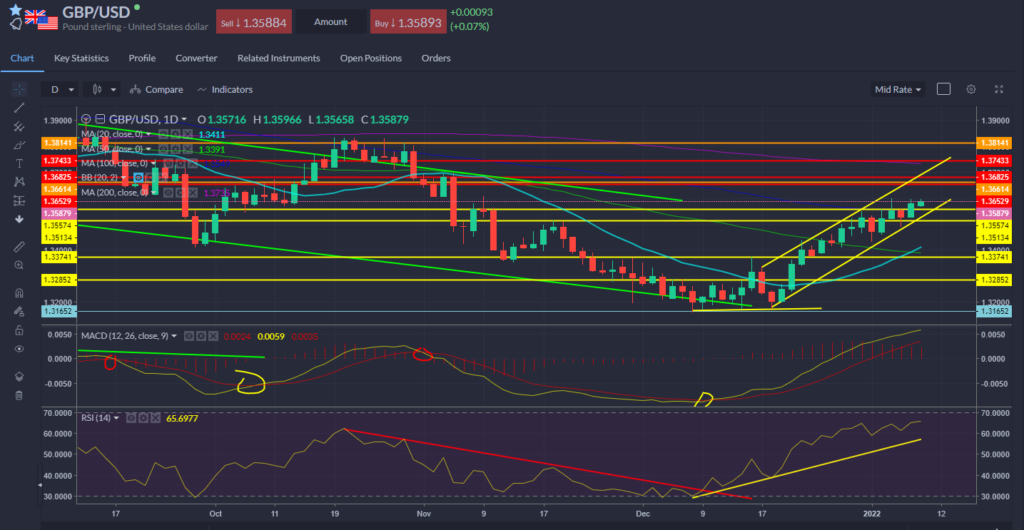
Monday Jan 10 2022 09:19

4 min
Stocks are off to a sluggish start in Europe after a mixed bag in Asia overnight, following four straight days of losses on Wall Street. The FTSE 100 was keeping its head below 7,500 but not looking to test last week’s lows, whilst shares in Frankfurt were closer to the bottom touched last week following the tech rout in the US.
The S&P 500 is coming off a run of losses not seen since September and is now sitting around the key 50-day moving average support that has resolutely been bought through last year. Each time the index flirts with this level it seems to spark a fresh rally, but we’re not in Kansas anymore Toto – the Fed is in tightening mode. Speculative tech and megacap growth stocks can’t offer the same leadership. XLE – the S&P 500 energy ETF – rallied 10% last week, whilst financials rose about 5%. The Nasdaq declined by around 5% in the first week of the year, whilst the S&P 500 was down around 2.5%. So a pretty a clear picture of mass rotation, baton-passing and dumping in speculative tech; ARKK fell over 12%.
Treasury yields rose as markets bet on the Fed raising rates at a swifter pace this year and reducing its balance sheet earlier. The yield on the benchmark 10yr paper touched 1.8%. Markets will be closely attuned to this week’s US CPI inflation figures for more clarity on where the inflation story is heading. As expressed last week, we’re at the point where, having retired transitory, policymakers have to accept that it’s also not just a supply side thin – demand-led, broadening of inflation pressures. Friday’s jobs report pointed to the struggle for workers and nascent wage price spiral.
Yields are now hitting pre-pandemic levels and the kind of price action we have seen looks like everyone’s 2022 forecasts coming true in the first month. The question is whether a move towards 2% for the 10yr limits equity markets – earnings growth will be critical. So far the market has repriced fairly rapidly to a higher rate environment and so looks in good shape to ride it out – even with further losses to come – over the course of the year.
Not a lot on the earnings front – looking ahead to British retailers Tesco and Sainsbury’s later in the week and the start of US earnings season with Citigroup and JPMorgan Chase due to report on Friday. Economic data is also thin on the ground today – focus on the inflation data from the US and Fed chair Jay Powell’s testimony this week.
UK housebuilders were on the move lower, with the big four all leading the decliners on the FTSE 100 – trading about 3% lower for the session – as the government changed its tune on cladding redress, with developers to foot the bill for repairs, which could run to as much as £4bn. In addition to the blue chips Persimmon, Berkley, Barratt Developments and Taylor Wimpey, the likes of Bellway, Countryside, Vistry, Redrow and Crest Nicholson also fell. It’s a nasty shock for developers – maybe there are others who should be shouldering some of the burden, maybe…but at the same time they’ve had years of making hay thanks to too much demand, not enough supply (which they control tightly), ultra-low rates and the Help to Buy (Help to Build) scheme.
Elsewhere…GBPUSD moved to touch last week’s two-month a whisker below 1.36. The dollar was firmer against the euro as EURUSD declined from around 1.1360 to 1.1320, holding within the narrow range of the last month and a half. Bitcoin held around $41k, a little above Friday’s low, the weakest the market has traded since the end of September.

